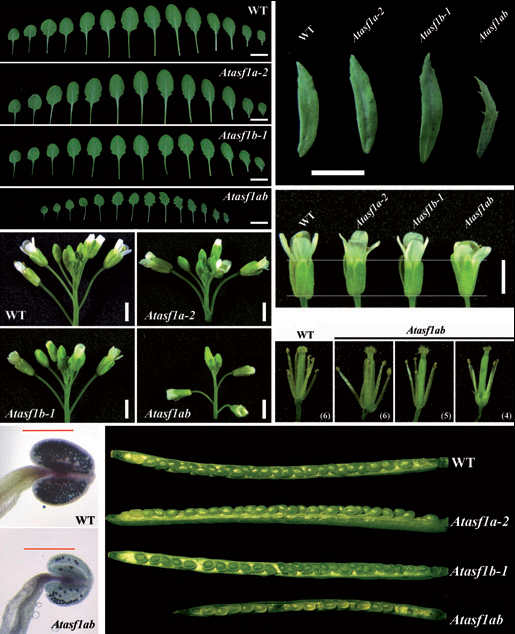Yan Zhu1,†, Minjie Weng1,†, Yue Yang1, Chi Zhang1, Ziyu Li1, Wen-Hui Shen2,* and Aiwu Dong1,*
1State Key Laboratory of Genetic Engineering, Department of Biochemistry, Institute of Plant Biology,
School of Life Sciences, Fudan University, Shanghai 200433, China, and
2Institut de Biologie Mole´ culaire des Plantes du CNRS, Universite´ de Strasbourg, 12 rue du Ge´ne´ ral Zimmer,
67084 Strasbourg Ce´ dex, France
The Plant Journal (2011) 66, 443–455 doi: 10.1111/j.1365-313X.2011.04504.x

Anti-silencing function1 (ASF1) is an evolutionarily conserved histone chaperone. Studies in yeast and animals indicate that ASF1 proteins play important roles in various chromatin-based processes, including gene transcription, DNA replication and repair. While two genes encoding ASF1 homologues, AtASF1A and AtASF1B, are found in the Arabidopsis genome, their function has not been studied. Here we report that both AtASF1A and AtASF1B proteins bind histone H3, and are localized in the cytoplasm and the nucleus. Loss-offunction of either AtASF1A or AtASF1B did not show obvious defects, whereas simultaneous knockdown of both genes in the double mutant Atasf1ab drastically inhibited plant growth and caused abnormal vegetative and reproductive organ development. The Atasf1ab mutant plants exhibit cell number reduction, S-phase delay/arrest, and reduced polyploidy levels. Selective up-regulation of expression of a subset of genes, including those involved in S-phase checkpoints and the CYCB1;1 gene at the G2-to-M transition, was observed in Atasf1ab. Furthermore, the Atasf1ab-triggered replication fork stalling constitutively activates the DNA damage checkpoint and repair genes, including ATM, ATR, PARP1 and PARP2 as well as several genes of the homologous recombination (HR) pathway but not genes of the non-homologous end joining (NHEJ) pathway. In spite of the activation of repair genes, an increased level of DNA damage was detected in Atasf1ab, suggesting that defects in the mutant largely exceed the available capacity of the repair machinery. Taken together, our study establishes crucial roles for the AtASF1A and AtASF1B genes in chromatin replication, maintenance of genome integrity and cell proliferation during plant development.

